PRINT TECHNOLOGY
It is better to get acquainted with communications concept as it is used here in more details at<
It will be discussed here NOT how to make it appear on a surface of paper a printed message, but the result to our senses in terms of the written message vs what actually generated it in reality and what has reached the reader.
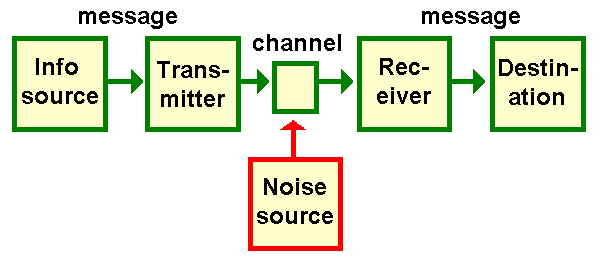
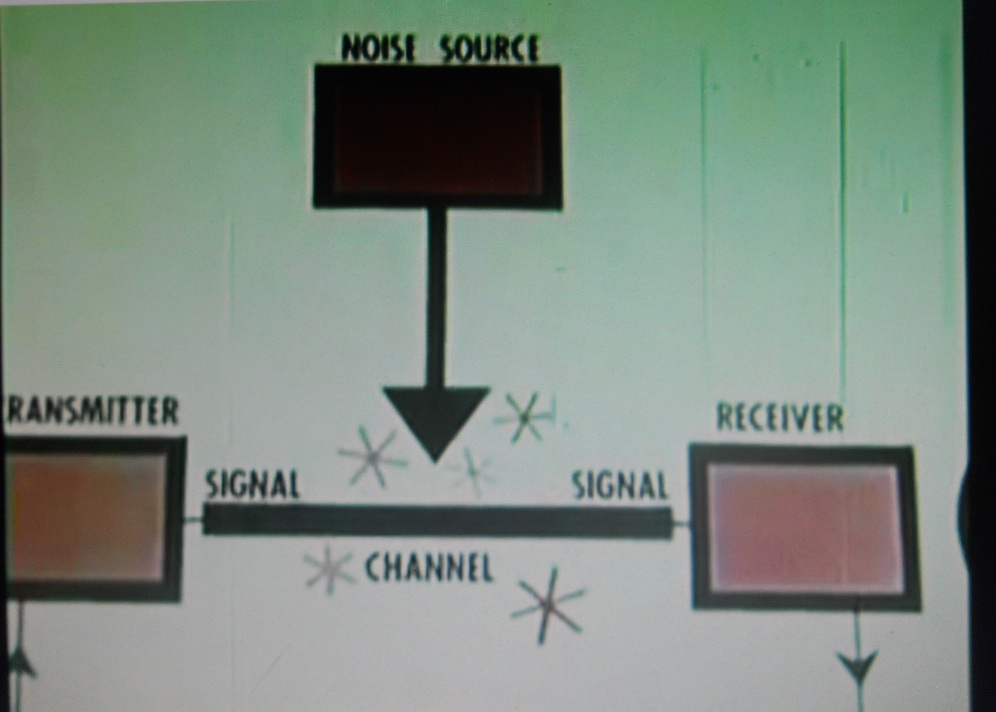



From the stand point of simply waht appears on the surface of the paper, the word is the signal, printed page the transmiter, light the channel, the eye the receiver. Actually the receiver is the brain.
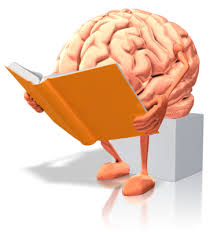
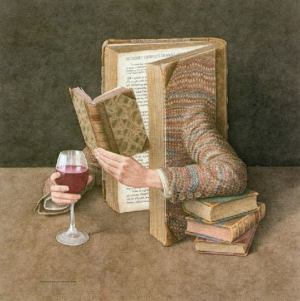
What about the noise?
If you take the Shannone Weaver model in consideration, the noise typically is the lack of light, excess of noise or uncomfortable environment, quality of the printed material, the size of the printed word, its format, etc.
It is NOT this kind of noise we are interested in. We are interested in the noise this technology introduces in the message taking into consideration what happened, what was perceiveid, the descripition of it in printed words, what was conveyed to the reader and what finally has reached his senses.
We have to bear in mind what is the purpose of something written.
To the average reader this discussion does not make sense, because we are so accustomed to have everything done through books and printed means that it is taken for grant that it is the right way, it is truthful and there is no other way of doin it. To make a long story short, let's tke the case of Socrates and Jesus. Why they never wrote anything (which could eventually be printed...)?
Because the pont o view that it would generate which was not the intention of them to achieve.
Everything we know from Socrates comes from Plato, that tells us the following, in Phaedrus:
"The discovery of the alphabet will create forgetfulness in the learner's souls, because they will not use their memories, they will trust to the external written characters and not remember of themselves. Your invention is not an aid to memory... You give your disciples not truth, but only the semblance of truth; they will be hearers of many things and will have learned nothing."
"Writing is one thing, and knowledge another. Writing is a photograph of knowledge, but not the knowledge itself. Knowledge is a light in everyone. It is the heritage of all our ancestors were able to learn and that is latent in all that we transmitted, as well as the baobab already exists in potential in its seed. "
Google the question "Why Jesus never wrote anything?" and you will not find this explanation which is the righ one so strong the biased the printed word is in our culture.
Better yet, google the question "Why Socrates never wrote anything?" and you alson sill not find the explanation above.
We became so rigidly impregnated with the ideas that everything has to came in form of books that the lack of wrting from Jesus and Socrates has been used to demonstrate that they actually dindn`t exist !!!!!!!!!!!!!
Socrates and Jesus simply were completely aware that The Medium is the Message!
From the presentation at TED TALKS, their grand son Eames Demetrios, I selected the following, which is a jewel of a finding in explaining one of the most difficult paradigms of the modern age: The printed book. We are so accustomed to take for grant that this is the only and the best way to store and stack information, to learn and to communicate that we fail to see the noise in this way of doing it. Let`s take a look in advance to the complete explanation McLuhan does about that in his Gutenberg Galaxy:
Lucia is Demetrios` mother was 5 when her father and his grandfather wrote her that letter. He was attending a convention of The Leather Crafter`s Guild in Helena, Arkansas, at the Hotel Nicholas.
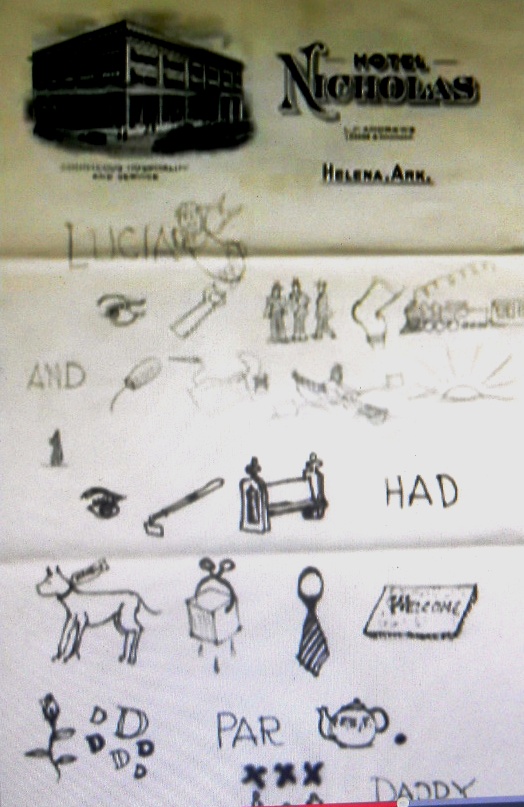
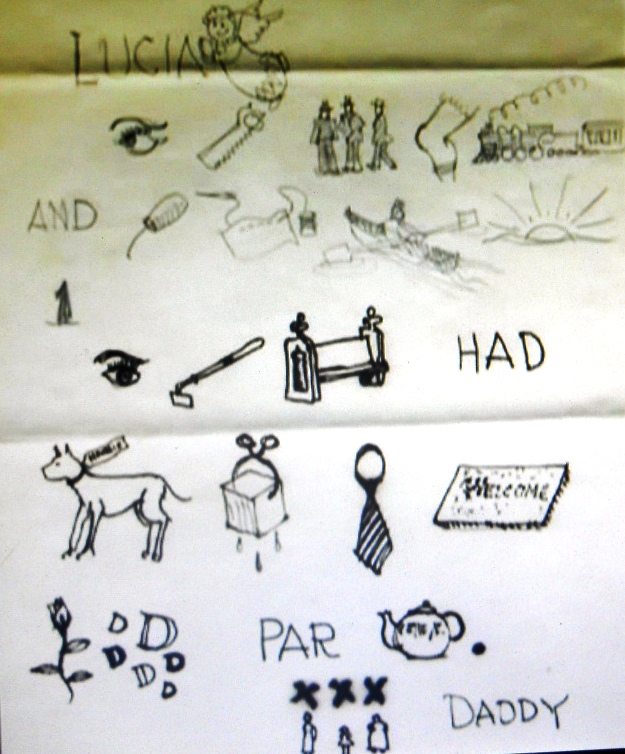
The letter says in plain English:
"Lucia Angel,
I saw many trains and also good that the leather crafter's is here. I also rode "dawn" one. I hope you had a nice time at Buddy`s Party.
You have to figure out through sounds and not actual writings. Ice, tie, mat, etc. Remember, a five year old knows the sounds which she calls the figures, not like us which we were trained on how to call them and write it down....
The Great Dane and the Rose are from popular icons of the time, late mid 30`s, The dogs of St.Louis and citizens Kane, which is the thing about the rosebud. Although at 5 she could never suspect what Citizen Kane is all about, the rose bud is still there and it seems a slip from Demetrios' interpretation...
It is weird, because this example not only allows us to understand what McLuhan does so complicate in his Gutenberg Galaxy, but also what Joyce does all the time specially at Finnegan's Wake...
Which figures with corresponding sounds to convey the same idea would you use in French, German, Spanish, Italian, Portuguese, or any other language? You wouldn't and this is precisely why you can`t translate Joyce... He uses a set of figures related only to his bring up and education end even when he access other languages, he does it on a limited way and also as a mean to sort of convert them to his knowledge, and NOT to the language in question. The complicated explanation which exists to extract meaning from some contents of his writings do not put his in perspective, but obscures it excavating deeply to the roots of all languages involved making it even more incomprehensible.
Actually James Joyce thrives on the limitations of the medium and the noise which prevented Jesus and Socrates from using it and NOT in its capabilities as so many scholars want us to believe... And the unbelievable and fantastic about this is that if you look with eyes willing to see, you will notice that the best explanation for all that is simply that Joyce had some sort of special way of doing it, making many critics even to consider him as having some sort of schizophrenic idiosyncrasy... I discuss that in detail when collecting opinions and facts abut James Joyce Health
As it can be deducted from there, you cannot classify for sure James Joyce as simply a person with an abnormal mental or another kind of health problem. Here we will establish a criteria of grouping the effects this whatever trait of James Joyce under a general name of NOISE, because to normal average human beings it is what it is and even if we take special groups of specialized or highly educated scholars, there will be no complete agreement, or agreement at all about the many possibilities Joyce has left us. Because it really is noise produced by Joyce`s mind and his wrecked radar to perceive reality.
In an ideal world, a printed message should do what a spoken message does the following way:

What actually happens can be understood on a somewhat exagerated example in the following way:
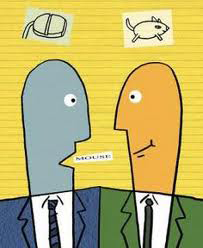

 IBM
IBM 
And the best example in the corporate life:

Where can we find this in James Joyce? The above examples are based in everyday situations and involve notions an average person can understand,. In the case of Joyce, a special set of situations were devised by him and there is some kind of agreement among the scholars and what they are related to:
In Ulysses
James Joyce himself did the grouping and separation of the sources of noise he used and his original design can be seen at.
In my job what I did was to dissect each and every one of the above under glueing, cohesive, bonding, focus, unifying elements which can be seen in detail at:
The complete study about Ulysses can be started at: McLuhan Glosses on Ulysses medium Origin
In Finnegan's Wake
Clive Hart did an attempt similar to what Joyce did himself that can be seen at:
In another job, dedicated to Finnegan's Wake, I pointed out that the Champollion which deciphered the Rosetta Stone that Finnegan's Wake was James S.Atherton. To my knowledge he gives the best description, selection and explanation of the NOISE sources James Joyce used to write the Wake and how we filter it to common sense.